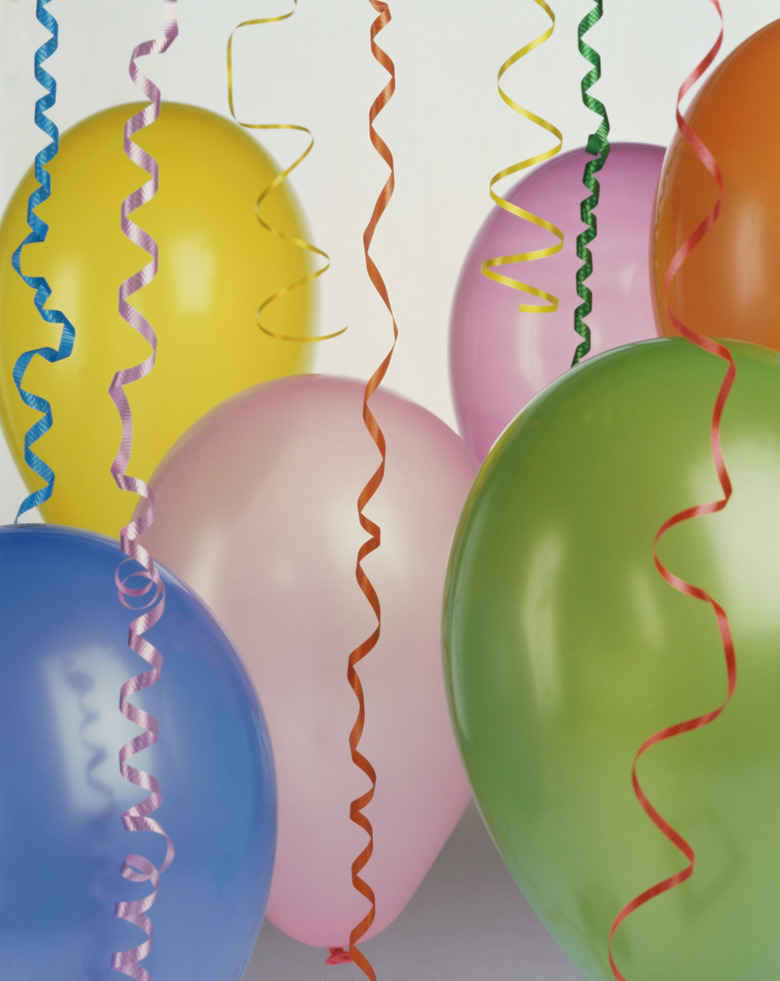Kindergarten Wind Activities
Air and wind aren't visible, but their effects are. Many activities centering around wind or air are fun for kindergarten classes or kids' parties. These easy activities can be done indoors with simple materials. They show how invisible airflow can move items, within limits.
Move Balloons with Paper Fans and Straws
Move Balloons with Paper Fans and Straws
Make an activity out of accordion-folding sheets of paper to make little hand-held fans (you could decorate the paper first, as another activity). Inflate a few balloons and place them on a table. Show the students how fanning the balloons uses wind to push them without the fans touching them. As a follow-up activity, you can show the students how the same can be done by blowing at a balloon with a straw.
Move Balloons with an Electric Fan
Move Balloons with an Electric Fan
Inflate a few balloons and put them on a table or the floor, directly in front of a fan. Block the fan with something like a sheet of cardboard and turn it on. Pull the cardboard away quickly so the air flow hits the balloons in a sudden rush. Note how far and fast the balloons tumble away from the fan. Then repeat this, but with the fan a few feet away. Note how it takes some time for the rush of air to reach the balloons, and they don't tumble as much.
Make Streamers Stand Up with a Fan
Make Streamers Stand Up with a Fan
Set a small fan securely on its back so it blows straight up. Starting on the low setting, hold one end of a roughly one-foot-long crepe paper streamer and show how the air makes it stand up. Then try longer and longer strips until the airflow can't support one. Next set the fan to high and try the same strip again to see if the air will support it (it should). Finally, starting with the first short strips, hold them in the airflow and release them to see how high the air will carry them.
Play Cotton Ball Ping-Pong Doubles
Play Cotton Ball Ping-Pong Doubles
On a table top, mark out a "court" with tape, or lay a whiteboard flat and draw lines like those on a ping-pong table. Put two students at each end and give them flex straws for blowing (use the flex section to bend the straws like hockey sticks). Have the students blow through the straws to volley a cotton ball back and forth. Show how they can steer the cotton ball by changing their blowing direction. For more fun, add a second ball into play.
Smell the wind!
Smell the wind!
Air is a mixture of gases, and that mixture can change as different gases or suspended particles are added. These form the basis of smells. Open a bottle of strongly scented volatile oil (for example, clove oil), let the kids smell near it to get to know the scent, and explain to the kids that what they are smelling is vaporized clove oil– a gas that will join the other gases in the air and, when pushed, move as wind. Then, have them stand several feet away, and open the bottle in front of a fan. Have them hold up their hands as soon as they can smell the clove scent. How long does it take to travel 5 feet? 10 feet? What difference does increasing the speed of the fan make?
Cite This Article
MLA
Silbajoris, Alex. "Kindergarten Wind Activities" sciencing.com, https://www.sciencing.com/kindergarten-wind-activities-7857858/. 24 April 2017.
APA
Silbajoris, Alex. (2017, April 24). Kindergarten Wind Activities. sciencing.com. Retrieved from https://www.sciencing.com/kindergarten-wind-activities-7857858/
Chicago
Silbajoris, Alex. Kindergarten Wind Activities last modified March 24, 2022. https://www.sciencing.com/kindergarten-wind-activities-7857858/

